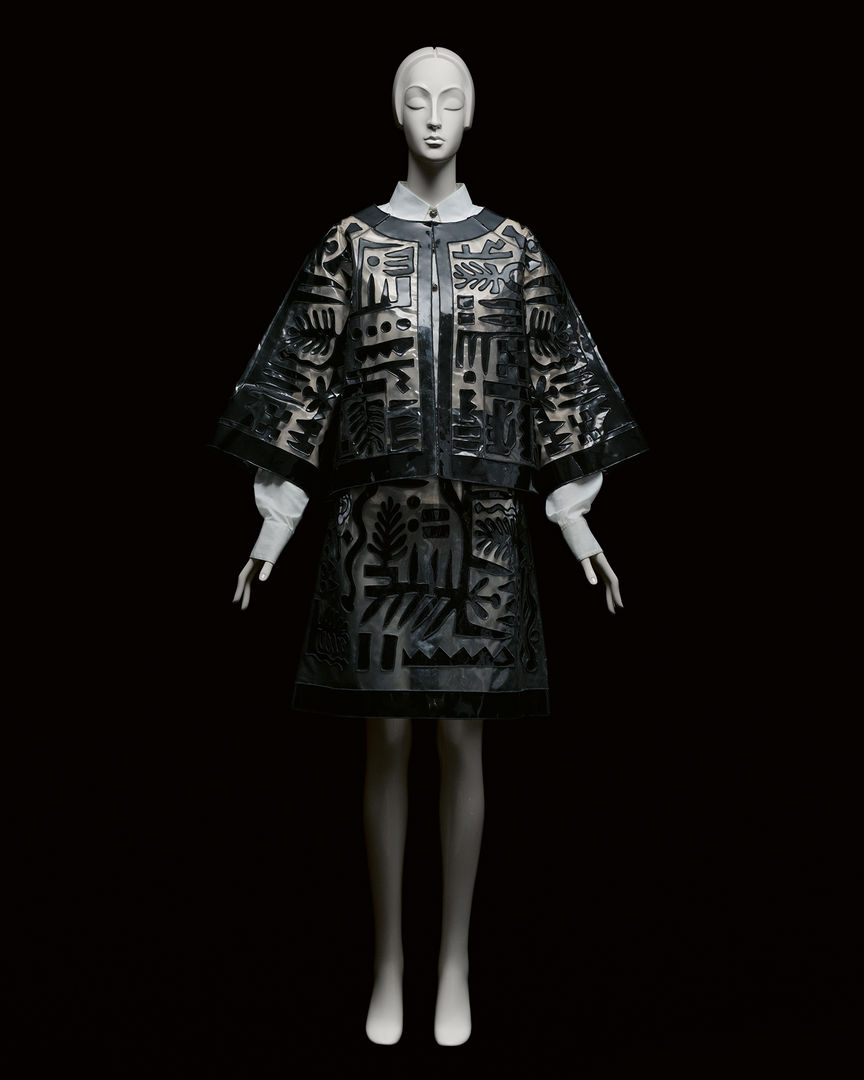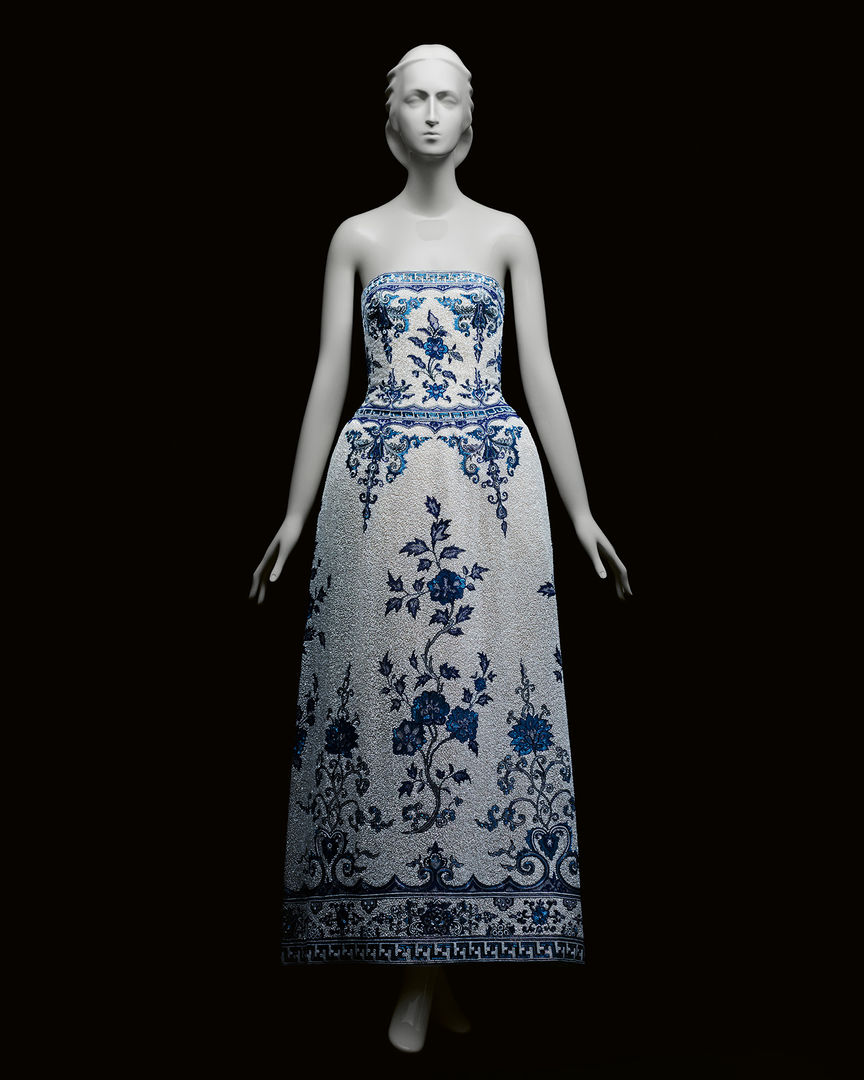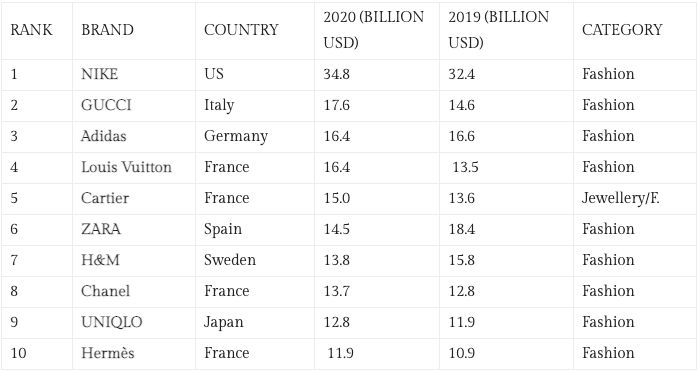
Artwork Is Artwork. Style Is Style.
“Artwork is artwork. Style is style.” — Karl Lagerfeld [1]
All through his prolific profession, Karl Lagerfeld maintained a persistent perception that artwork was distinct from, and maybe even antithetical, to style. Regardless of this, he typically consulted each positive and ornamental arts for inspiration as he designed collections each season for Chanel, Fendi, Chloé, and his eponymous label, amongst others. Beneath you can see three items designed by Lagerfeld which might be featured within the exhibition Karl Lagerfeld: A Line of Magnificence that include different and infrequently shocking references to the historical past of artwork. Regardless of his claims about style and artwork, Lagerfeld’s propensity to interweave disparate modes of artistic manufacturing demonstrates the basic permeability between these discursive classes.
Home of CHANEL Swimsuit

Home of CHANEL (French, based 1910), Karl Lagerfeld (French, born Germany, 1933-2019). Swimsuit, autumn/winter 2008-9. Jacket and skirt of polyurethane; shirt of cotton poplin. Courtesy CHANEL.
Created for the autumn/winter 2008-09 ready-to-wear season and product of black and clear polyurethane, this Chanel go well with design assimilates gown and different creative references. The ensemble’s angular silhouette is borrowed from eighteenth-century imperial Chinese language armor. Lagerfeld typically appeared past the canon of style historical past for design inspiration and regularly consulted public sale catalogues and museum collections as reference materials. Inside the archived sources that element the manufacturing of the gathering is a photocopy of a uncommon foot-soldier’s uniform, scanned from a listing of the 1995 exhibition Heaven’s Embroidered Cloths: One Thousand Years of Chinese language Textiles on the Hong Kong Museum.

Manchu army ceremonial uniform, 1766. Silk satin, gilt steel, lacquer, and horsehair: 75cm, skirt size: 80cm. Hong Kong Museum of Artwork
Dated to 1776, in the course of the reign of the Qianlong emperor (1736-95), this uniform, made for ceremonial processions fairly than for battle, consists primarily of a cream-colored silk satin jacket and matching apron skirt, each edged in navy blue silk satin and studded with gilt steel rivets within the brigandine-style of dingjia (“armor with nails”).[2] The trapezoidal form of the jacket and skirt are echoed within the silhouette of the Chanel go well with. Nevertheless, the steel studs that enhance the outside of the armor—initially there to carry protecting inside steel plates in place—have been changed by abstracted Matisse-like botanical and geometric motifs. These cowl the ensemble’s total floor, recalling the foliate appliqués of Hungarian-American designer and textile artist Mariska Karasz.

Mariska Karasz (American, Budapest, 1898-1960). Ensemble ca. 1927. Silk. The Metropolitan Museum of Artwork, New York, Reward of Katherine J. Judson, in reminiscence of Jeanne Wertheimer, 1977 (1977.284.2a, b)
This instance of Karasz’s work, made round 1927, was acquired by The Costume Institute in 1977. Composed of an identical coat and gown, this present day ensemble of navy silk faille is adorned with hemmed appliqués of cream-colored silk crepe and is ostensibly the supply of inspiration for the motifs that seem on the floor of the Chanel go well with. It was included within the 1998-99 exhibition Cubism and Style, the place curator Richard Martin paired it within the catalogue with Picasso’s portray Queen Isabella (1908). The aim of the juxtaposition was to exemplify the inter-planar dynamism of “float[ing] fragments and items above and under each other on an ambiguous aircraft,” describing not solely the technical praxis of collage and of Cubism but in addition the embellished floor of Karasz’s creation.[3] The complexity of floating types towards an ambiguous background is pushed to its fullest potential in Lagerfeld’s design. As an alternative of Karasz’s strong blue floor, Lagerfeld makes use of a clear colorless polyurethane—upon which Karasz’s motifs seem as if suspended in air—successfully eliminating the seen boundary of the garment’s floor and concurrently revealing one more aircraft beneath.
Home of CHANEL Gown

Home of CHANEL (French, based 1910), Karl Lagerfeld (French, born Germany, 1933-2019). Gown, spring/summer season 1984 high fashion. Silk organza, glass beads and crystals. Courtesy CHANEL.
This totally beaded Chanel night robe was created in the course of the starting of Lagerfeld’s thirty-seven-year tenure at Chanel for the spring/summer season couture season of 1984—then solely the designer’s third couture assortment for the home. It’s an particularly positive and masterful instance of couture hand embroidery executed by the Home of Lesage in collaboration with Chanel. In an article from Girls’s Put on Day by day from January 1984, Lagerfeld described the blue-and-white porcelain-inspired motifs as being “proper out of a portrait by Sargent.”[4]

John Singer Sargent (American, 1856-1925). The Daughters of Edward Darley Boit, 1882. Oil on canvas, 87 3/8 x 87 5/8 in. (221.93 x 222.57 cm). Reward of Mary Louisa Boit, Julia Overing Boit, Jane Hubbard Boit, and Florence D. Boit in reminiscence of their father, Edward Darley Boit. Courtesy MFA Boston
Maybe Lagerfeld was referring to The Daughters of Edward Darley Boit (1882), the celebrated group portrait made well-known by its quiet introspection and weird composition by which two massive blue-and-white nineteenth-century Japanese porcelain vases dwarf the portray’s 4 youthful topics. Regardless of this evocation, the Chanel night robe borrows its ornamental motifs from blue-and-white eighteenth-century imperial Chinese language porcelain. (An extant instance of this Jingdezhen ware design is housed at The Met.) The sample, which teems with sprays of ripe fruit and peony, chrysanthemum, and lotus blossoms, is rendered in blue cobalt-based underglaze that’s hand-painted over white porcelain.

Hexagonal vase with Rococo-style flowers, 18th century. Qing dynasty (1644-1911), Qianlong periiod (1736-95), China. Porcelain painted in underglaze cobalt blue (Jingdezhen ware), H. 27 1/4 in. (69.2 cm); Diam. 12 1/4 in. (31.1 cm). The Metropolitan Museum of Artwork, New York, Reward of Paul E. Manheim, 1966 (66.156.1)
The robe, which Hebe Dorsey described within the Worldwide Herald Tribune as one of many “greatest moments”[5] of the gathering, consists of a floor of white silk organza with the painted motifs of the ceramic diligently reconstituted throughout the robe’s floor with 1000’s of embroidered blue, white, and clear seed beads and crystals. The whole period of time to realize this was a outstanding 1,800 hours of handwork.
Chloé “Astoria” Gown

CHLOÉ (French, based 1952), Karl Lagerfeld (French, born Germany, 1933-2019). “Astoria” gown, spring/summer season 1967. Silk crepe de chine. Courtesy CHLOÉ.
This Chloé gown belongs to the spring/summer season 1967 assortment, created in the course of the early years of Lagerfeld’s twenty-four 12 months on-and-off artistic partnership with Chloé that started in 1964 and led to 1997. The design of the gown, which is product of ivory silk crepe de chine, is impressed by the prolific British illustrator Aubrey Beardsley’s sensuous interpretation of Sir Thomas Malory’s fifteenth-century Arthurian traditional Le Morte d’Arthur. For Lagerfeld, who, as a younger boy, dreamed of changing into an expert illustrator and caricaturist, Beardsley’s work offered a seemingly infinite properly of inspiration. Over the course of his life, he dedicatedly collected the artist’s work for his personal private assortment. As soon as, in 2017, he even paid a bookdealer good friend to fly to New York for the only real goal of bidding on and successful three small Beardsley vignettes at public sale.[6]

Aubrey Vincent Beardsley (British, 1872 – 1898). How Sir Tristram Drank of the Love Drink, 1893. Ink and graphite on wove paper, 28.3 x 22.1 cm.
Particularly, the “Astoria” gown borrows its motifs from an illustration that depicts the chivalric romance of Tristram and Isolde, titled How Sir Tristram Drank of the Love Drink. The illustration appeared within the 1893 version of Malory’s Le Morte d’Arthur, revealed by J. M. Dent & Co. The detailed border of Beardsley’s illustration, with its daring stylized floral imagery and steady serpentine line, might be seen in Lagerfeld’s design, primarily down the middle entrance of the gown. Moreover, the cape of the determine on the proper (Isolde) serves as a reference in each its composition of large-bulbed flowers set towards a white floor, with sinuous stems sprouting from the hem. The four-petaled cruciform flowers that enhance the sloping backside border of Isolde’s cape additionally seem in the identical place of the “Astoria” gown in an identical configuration.

Nonetheless from an interview with Anita Briey, former première d’atelier at Karl Lagerfeld, and Nicole Lefort, former textile artist for Chloé, 2022. Courtesy Deralf/Bangumi
The colourful floor of the gown is achieved via a method of silk-painting known as serti, by which a design is printed on stretched cloth with a resist (to maintain the paint from bleeding), then crammed in with paint, and at last set with warmth. Whereas at Chloé, Lagerfeld designed many clothes that utilized the serti method, each carried out, by hand, by textile artist and collaborator Nicole Lefort, who started at Chloé simply two years after him within the fall of 1966. This stage of hand-based, artisanal craftsmanship is normally reserved for couture fairly than for ready-to-wear clothes; Lefort’s artistry elevated Chloé’s ready-to-wear designs just like the “Astoria” gown to outstanding ranges. Of the entire hand-painted clothes she created with Lagerfeld, Lefort shared in an interview, the “Astoria” gown was fairly widespread, with someplace between 100 and 150 produced.[7] She proudly added that “[t]hey all got here out of my workshop—that’s essential to me—and there have been no prints. [Each dress] was hand painted.”[8]
There are a lot of extra creative references inside Lagerfeld’s physique of labor which might be well-documented inside the exhibition and its catalogue. Whereas many of the objects inside the present are offered with the sketches that preceded them, many ensembles are additionally paired with photographs of the artworks that impressed them.
Notes
[1] Carol Vogel, “An Advert for Chanel, with an Creative Mission.” New York Occasions, July 24, 2008, https://www.nytimes.com/2008/07/24/arts/24iht-24zaha.14742206.html. [2] “Ceremonial Armors for Man (Dingjia) and Horse,” The Metropolitan Museum of Artwork, https://www.metmuseum.org/artwork/assortment/search/35726. [3] Richard Martin, Cubism and Style (New York: Metropolitan Museum of Artwork, 1998), 102. [4] “Paris Advance: Chanel.” Girls’s Put on Day by day, January 23, 1984. [5] Hebe Dorsey, “’My Honest Girl’ Look Unveiled by Ungaro.” Worldwide Herald Tribune, January 25, 1984. [6] Alfons Kaiser, Karl Lagerfeld: A Life in Style (New York: Cernunnos, 2022), 178. [7] Andrew Bolton, Karl Lagerfeld: A Line of Magnificence (New York: Metropolitan Museum of Artwork, 2023), 10. [8] Ibid.


